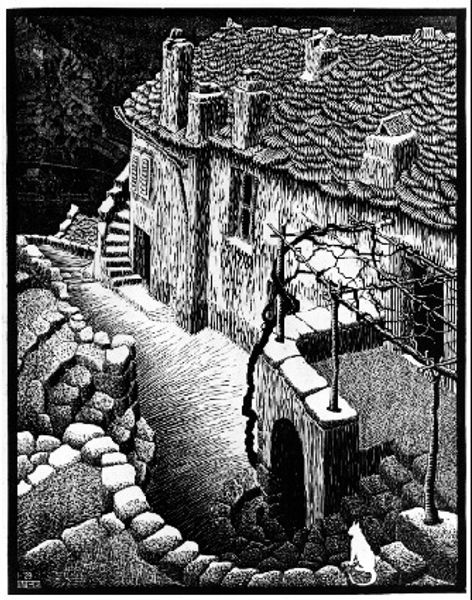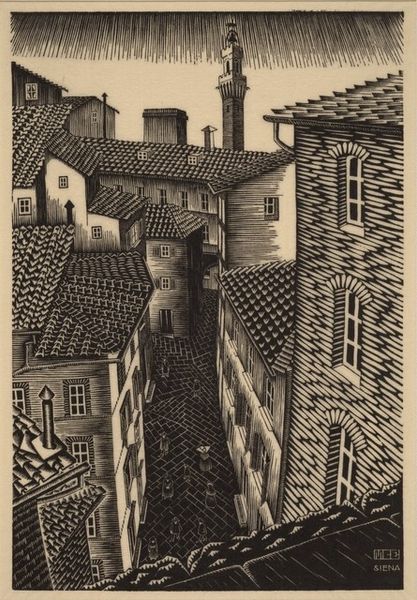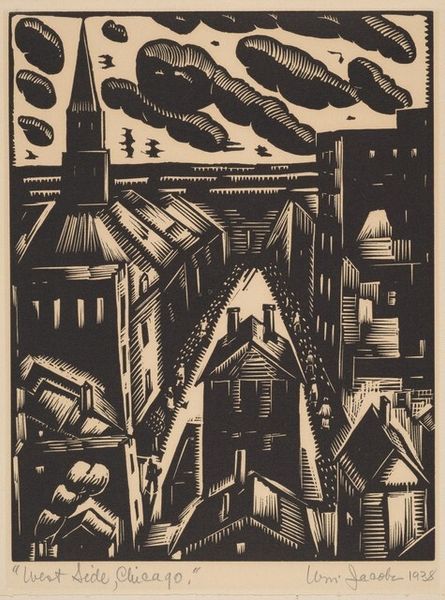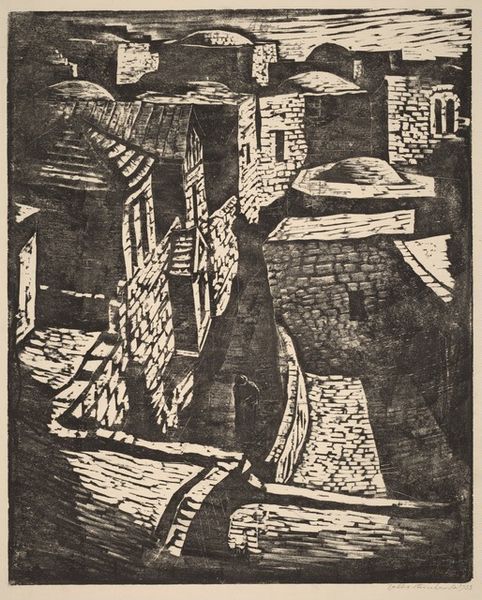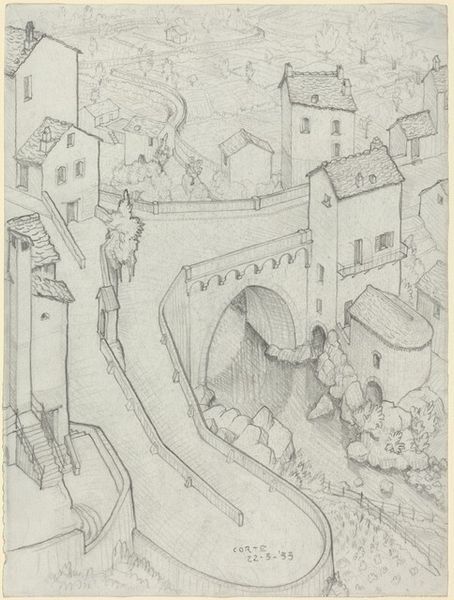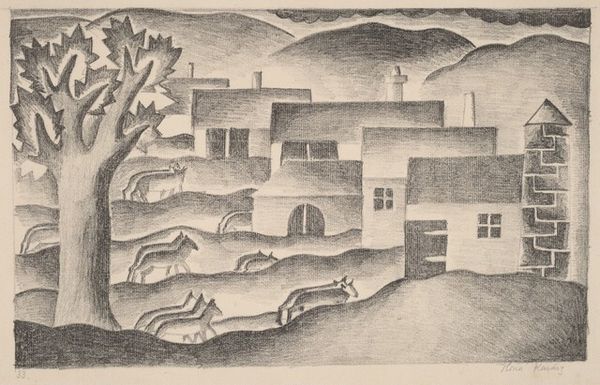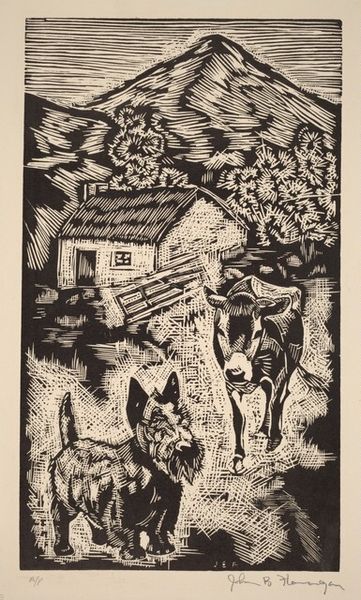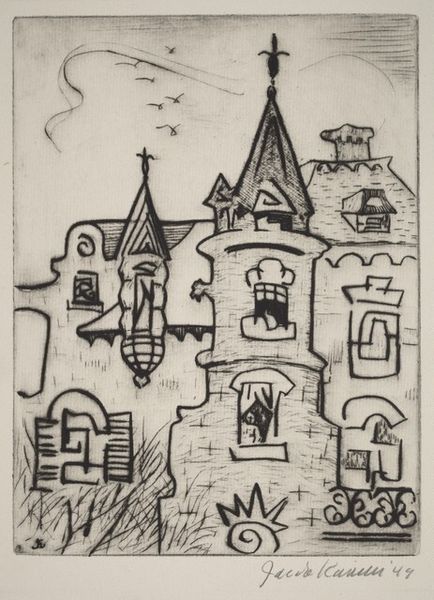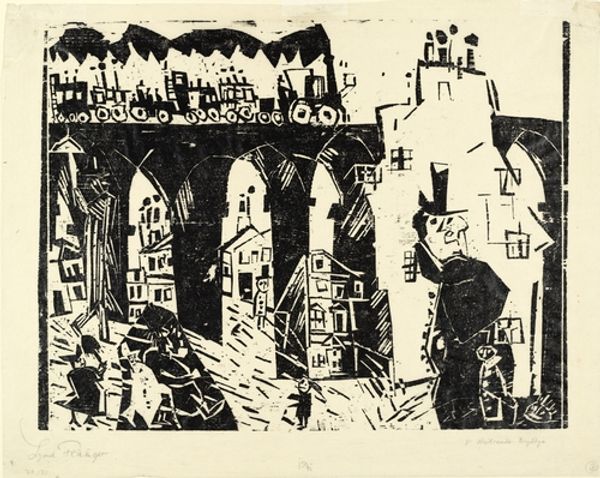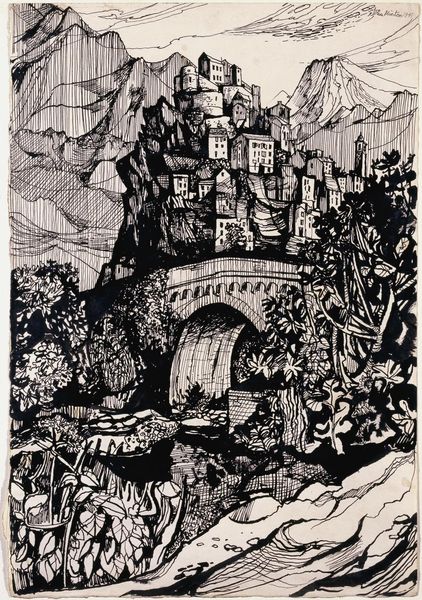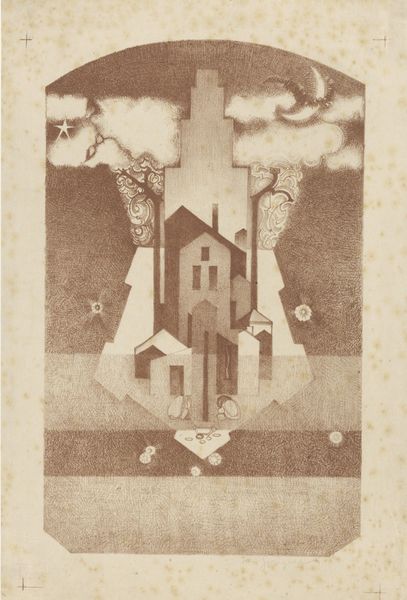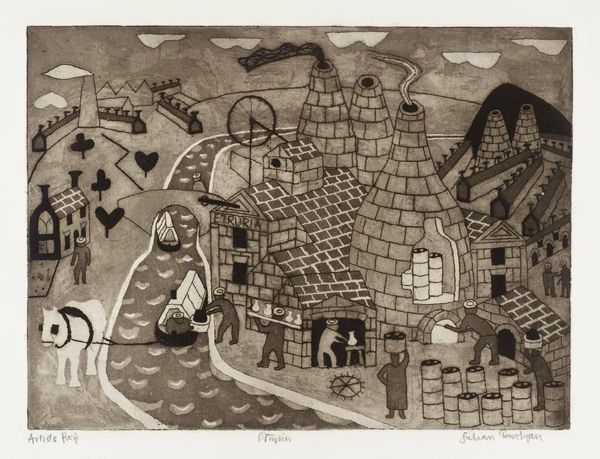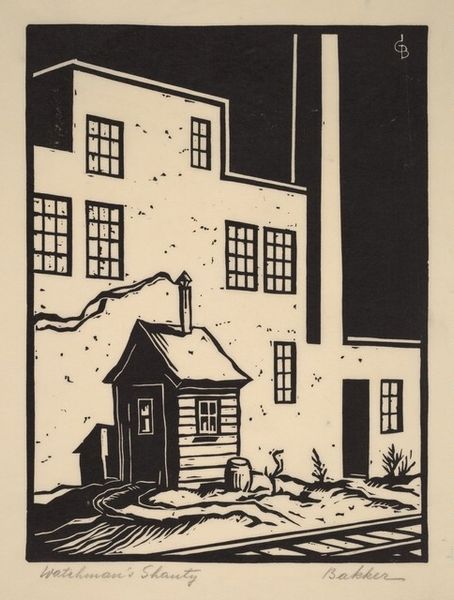
lithograph, print, etching
#
lithograph
# print
#
etching
#
perspective
#
geometric
#
cityscape
#
modernism
Dimensions: image: 53.5 x 37.8 cm (21 1/16 x 14 7/8 in.) sheet: 60.8 x 45.7 cm (23 15/16 x 18 in.)
Copyright: National Gallery of Art: CC0 1.0
Curator: What a marvel of perspective. M.C. Escher's lithograph and etching, "The Bridge," created in 1930, invites us into a captivating cityscape perched atop rocky cliffs. Editor: My immediate reaction is one of architectural fascination. It evokes a slightly unsettling mood. There's something about the density and the near monochromatic palette that suggests enclosure, despite the open sky. Curator: Precisely! Escher’s mastery lies in juxtaposing the natural landscape with the constructed environment, pushing the boundaries of how we perceive space. This lithograph came at a time of tremendous social and economic instability globally. How might we consider "The Bridge" as an intersectional dialogue of belonging during pre-war anxieties? Editor: That's insightful. If we examine Escher’s political position within Europe, we can trace the rise of Modernism’s architectural utopianism as social escapism within totalitarian regimes. This print certainly underscores those societal anxieties by creating this sort of maze where it is unclear whether it is a space to inhabit, or escape from. Curator: Note how the geometric forms and intricate details create an almost dreamlike atmosphere. What narratives of accessibility and segregation may emerge through a close reading of the winding stairs and arched structures? Editor: I also wonder how Escher's prints were originally intended to be consumed by the masses during a time when museums catered to elite audiences, creating questions around access and public consumption. Curator: Absolutely, by distributing prints like "The Bridge," Escher was engaging with a broader audience, potentially disrupting the traditional hierarchies of art viewership. Editor: Indeed, thinking about "The Bridge" today makes us consider how the distribution and accessibility of images are essential for democratic social engagement. The art piece's inherent tension and unsettling perspectives mirror our ever-evolving political and social landscapes. Curator: Ultimately, the visual conundrum challenges us to rethink what connects or disconnects us from different perspectives and to engage in conversations on belonging in all facets of society. Editor: Well said, an enduring work that continues to provide critical insights for those studying history and political expression through art.
Comments
No comments
Be the first to comment and join the conversation on the ultimate creative platform.
